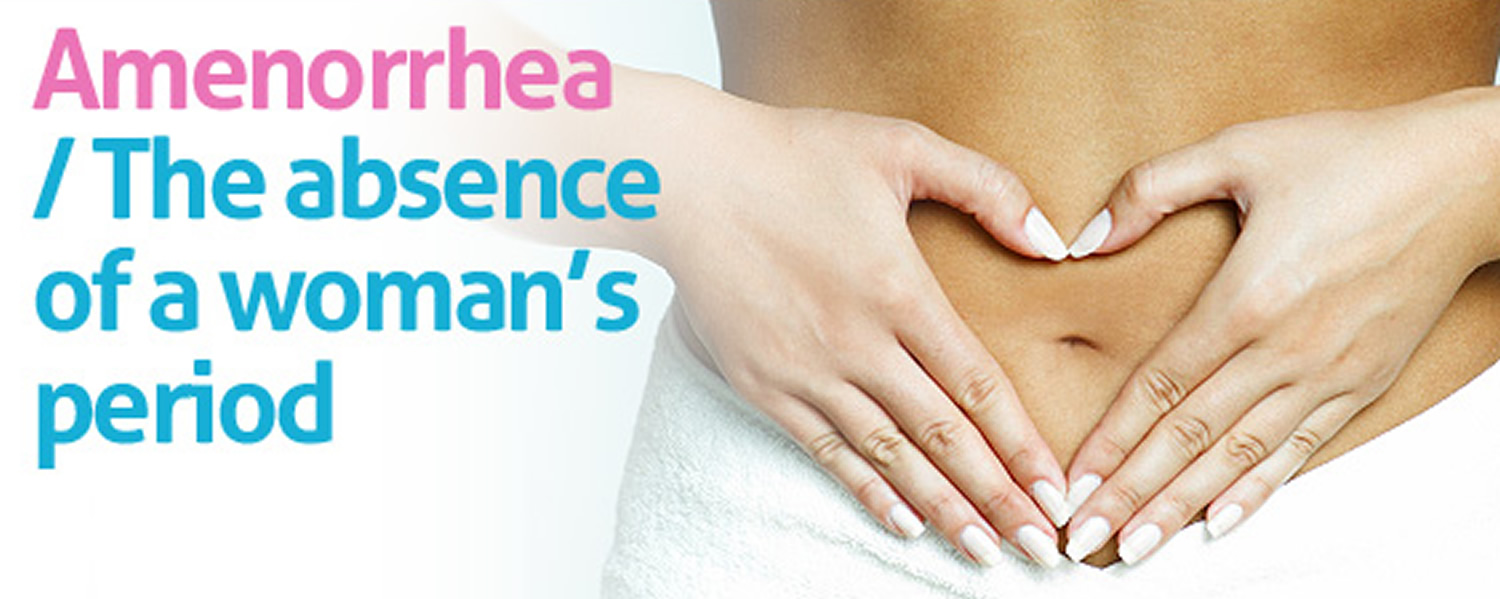Article Contents ::
General Sign and Symptoms Amenorrhea
- The absence of menstrual flow, amenorrhea can be classified as primary or secondary. With primary amenorrhea, menstruation fails to begin before age 16. With secondary amenorrhea, it begins at an appropriate age, but later ceases for 3 or more months in the absence of normal physiologic causes, such as pregnancy, lactation, or menopause.
- Anovulation itself may result from hormonal imbalance, stress or emotional disturbances,debilitating disease, obesity, strenuous exercise, malnutrition, or anatomic abnormalities, such as a congenital absence of the ovaries or uterus.

History and Physical Examination Amenorrhea
- Begin by determining whether the amenorrhea is primary or secondary.
- at what age her mother first menstruated because age of menarche is fairly consistent in families.
- heredity and climate may delay menarche until after age 16.
- onset and nature of any changes in her normal menstrual pattern, and determine the date of her last period.
- history, noting especially any long-term illnesses, such as anemia, or use of hormonal contraceptives.
- Observe for appearance for secondary sex characteristics or signs of virilization.
General Medical Causes Amenorrhea
- Adrenal tumor. Amenorrhea may be accompanied by thinning scalp hair, hirsutism, acne, increased blood pressure, and psychotic changes, truncal obesity.
- Adrenocortical hypofunction. In addition to amenorrhea, adrenocortical hypofunction may cause fatigue, irritability, weight loss, increased pigmentation.
- Amenorrhea-lactation disorders. Amenorrhea-lactation disorders, such as Forbes-Albright and Chiari-Frommel syndromes, produce secondary amenorrhea accompanied by lactation in the absence of breast-feeding.
- Adrenocortical hyperplasia. Amenorrhea precedes characteristic cushingoid signs, such as truncal obesity, moon face, buffalo hump, bruises, purple striae, hypertension, renal calculi, psychiatric disturbances
- Anorexia nervosa. Anorexia nervosa is a psychological disorder that can cause either primary or secondary amenorrhea.
- Corpus luteum cysts. Corpus luteum cysts may cause sudden amenorrhea as well as acute abdominal pain and breast swelling. Examination may reveal a tender adnexal mass and vaginal and cervical hyperemia.
- Hypothyroidism. Deficient thyroid hormone levels can cause primary or secondary amenorrhea. Other common findings include anorexia, abdominal distention, decreased libido, ataxia, intention tremor, nystagmus, and delayed reflex relaxation time, especially in the Achilles tendon.
- Pituitary tumor. Amenorrhea may be the first sign of a pituitary tumor. Associated findings include headache; visual disturbances, such as bitemporal hemianopsia; and acromegaly
- Ovarian insensitivity to gonadotropins. A hormonal disturbance, ovarian insensitivity to gonadotropins leads to amenorrhea and an absence of secondary sex characteristics.
- Pseudoamenorrhea. An anatomic anomaly, such as imperforate hymen, obstructs menstrual flow, causing primary amenorrhea and, possibly, cyclic episodes of abdominal pain.
- Polycystic ovary syndrome. Typically, menarche occurs at a normal age, followed by irregular menstrual cycles, oligomenorrhea, and secondary amenorrhea.
- Thyrotoxicosis. Thyroid hormone overproduction may result in amenorrhea. signs and symptoms include an enlarged thyroid (goiter), nervousness, heat intolerance, diaphoresis, tremors, palpitations, tachycardia, dyspnea, weakness, and weight loss despite increased appetite.

